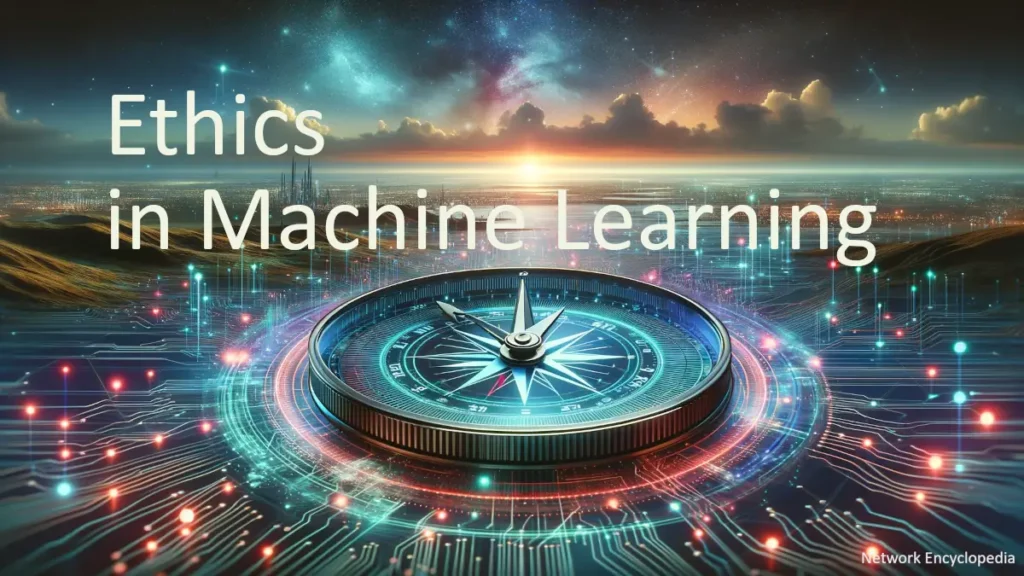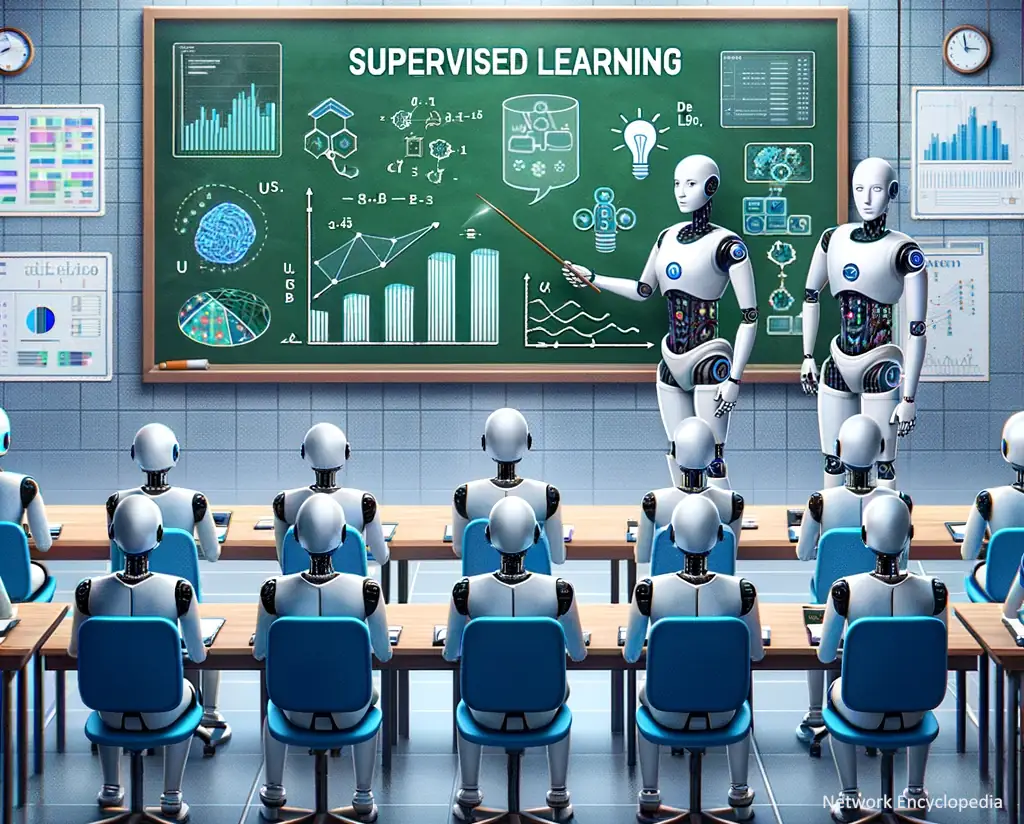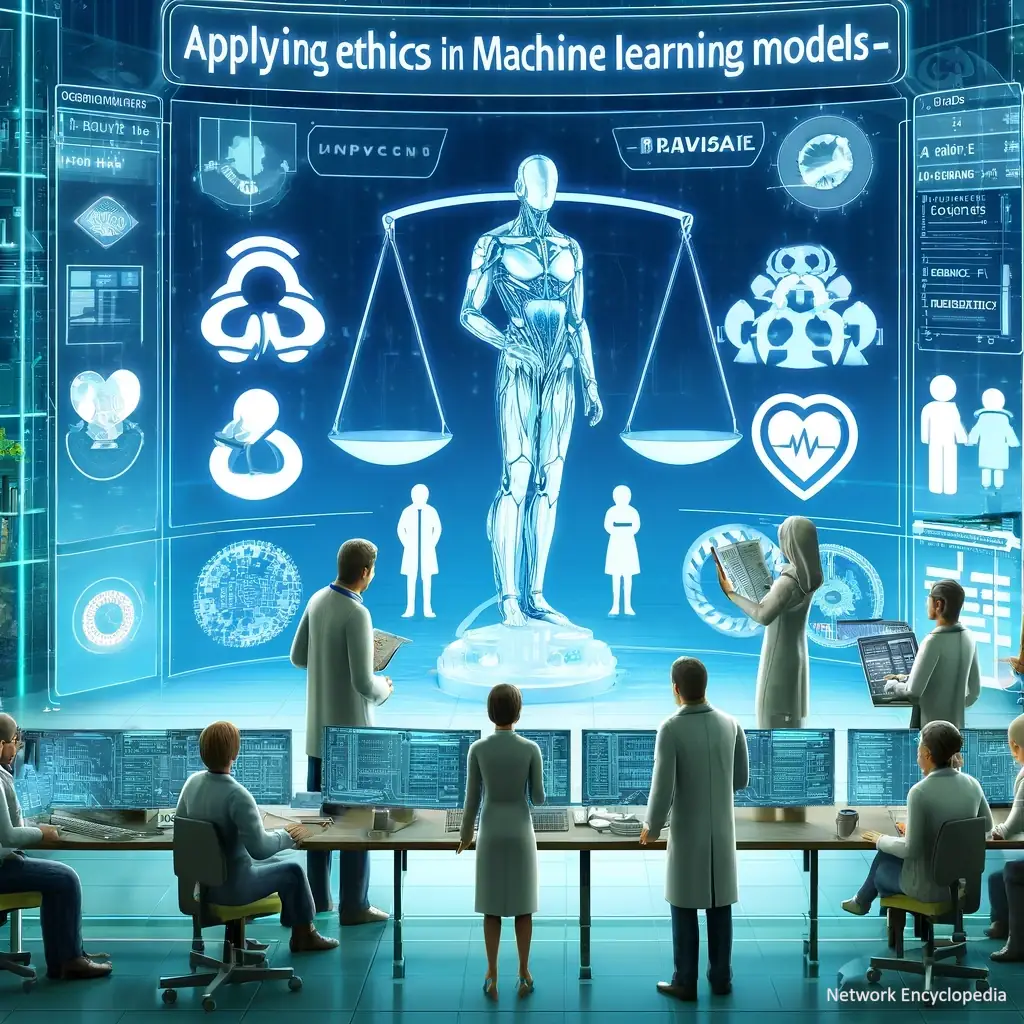Welcome aboard, intrepid explorers of the digital age! As we embark on our journey through the sprawling jungle of machine learning, it’s crucial to carry a compass—ethics. In this manual, “Ethics in Machine Learning: Navigating the New Frontier,” we’ll traverse the challenging terrain where technology meets humanity. Machine learning isn’t just about algorithms and data; it’s about the pulse in the machine and the people it affects. Imagine we’re on an expedition together, deciphering ancient runes, except the runes are code, and our quest is to ensure it serves the greater good without wreaking havoc.
As we navigate this new frontier, we’ll encounter dragons—ethical dilemmas—that guard hidden treasures: fairness, accountability, and transparency. We’ll arm ourselves with the latest tools and insights to tame these beasts, ensuring our AI creations enhance lives without crossing the dark borders of bias and harm.
So, let’s lace up our boots, adjust our moral compasses, and prepare to delve into the heart of machine learning ethics. Together, we’ll uncover the secrets to creating not just intelligent, but also wise and ethical AI systems.
Table of Contents:
- What is AI Ethics?
- The Landscape of Machine Learning
- Identifying Ethical Dilemmas
- Frameworks for Ethical Decision-Making
- Tools and Techniques for Ethical AI
- Case Studies: The Good, the Bad, and the Ugly
- Future of Ethical Machine Learning
- References

1. What is AI Ethics?
Welcome to the first chapter of our adventure! In the realm of artificial intelligence, where algorithms predict and automate, “ethics” might seem like a quaint addition—perhaps akin to bringing a sword to a drone fight. Yet, this sword, my friends, is our mightiest weapon.
AI Ethics is the branch of philosophy that deals with the moral implications and responsibilities of artificial intelligence. As creators of AI, we are like the gods of myth, breathing life into clay. But with great power comes great responsibility. We must ask not only what our creations can do, but also what they should do.
Ethical AI ensures that as our algorithms make decisions—be it deciding who gets a loan or who sees a job ad—they do so in a manner that is fair, transparent, and accountable. Imagine AI as a teenager. It’s potentially brilliant but without guidance, it might make choices that are… let’s say, less than ideal. Our job is to be the wise mentors, guiding our digital progeny towards a path of moral maturity.
Why, you might ask, is ethics essential in machine learning? Simply put, because our creations affect real lives. When an AI system decides who gets parole and who doesn’t, it’s playing with human fates. If it’s biased, it’s not just a glitch—it’s a potentially life-altering error. We’re here to make sure the digital footprint we leave is one we’re proud of, not one that tramples over people’s rights and dignity.

In the upcoming sections, we’ll dive deeper into specific ethical challenges, tools for maintaining ethical standards, and real-world applications where AI ethics is not just theoretical but crucially practical. Buckle up—it’s going to be an enlightening ride!
2. The Landscape of Machine Learning
2.1 Brief Overview of Machine Learning Technologies
Ah, the bustling bazaar of machine learning technologies—where data, statistics, and computing dance a complex tango! At its core, machine learning (ML) involves teaching computers to learn from and make decisions based on data. Unlike traditional programming, where humans input exact rules, ML algorithms discover the rules for themselves by examining patterns in data.
The landscape is vast and varied: from supervised learning, where models are like students learning under the strict guidance of labeled data, to unsupervised learning, akin to explorers charting unknown territories without a map. There’s also reinforcement learning, where AI learns through trial and error, much like a young dragon learning to fly—rewarded for soaring, nudged when nosediving.

Deep learning, a subset of ML, mimics the neural networks of human brains, crafting layers of understanding from pixels or text snippets to complex concepts like “cat” or “sarcasm.” This technique powers many modern marvels, from voice assistants that decode your mumbled “s’more coffee” to systems that diagnose diseases from medical images with astonishing accuracy.
2.2 Where Ethics Enters the Equation
As we delve deeper into this technological terrain, ethics emerges not as a checkpoint but as a guide, ensuring our technological trek doesn’t trample the values we hold dear. Ethics enters the equation from the very inception of an algorithm: What data do we feed it? Who designs it and for whom? Each step can subtly shape the technology in ways that either uphold or undermine ethical standards.
The insertion of ethics here is not just about preventing harm but about fostering trust. As these technologies pervade more aspects of our lives—from what news we see to who gets hired or granted a loan—the stakes get higher. Ethical machine learning ensures that our digital creations act as allies, enhancing societal well-being rather than acting as agents of division.
3. Identifying Ethical Dilemmas
3.1 Bias: The Sneaky Snake in the Grass
Bias in machine learning is like a sneaky snake in the lush grass of data—it can bite when least expected, injecting its venom into decisions. This happens when algorithms are fed or develop skewed perceptions based on unrepresentative or prejudiced data. Like a bad apple spoiling the bunch, even a small amount of biased data can lead to unfair outcomes, such as job recommendation systems favoring one demographic over another, or facial recognition systems failing to accurately identify certain ethnic groups.
Fighting this sneaky snake requires vigilance—regular checks (audits) of both the data and the algorithm. It’s about asking not just “Does it work?” but “Who does it work for and who might it fail?” and “What are the consequences of getting it wrong?”
3.2 Privacy: The Invisible Cloak of Data
Privacy in the realm of machine learning is the invisible cloak that must shield the treasure trove of data from prying eyes. As ML systems require vast amounts of data to learn and refine their capabilities, the risk of exposing personal information increases. From health records to personal messages, this data can reveal more about us than we might wish.

Ensuring privacy is akin to weaving a cloak that is not only opaque but also adaptable, shielding users from unauthorized surveillance while allowing for the benefits of data analysis. Techniques like differential privacy, which adds a sprinkle of “noise” to data to mask individual identities or federated learning, where models learn from decentralized data without it ever leaving its home, are part of the modern mage’s toolkit.
3.3 Accountability: Who Holds the Sword?
Accountability in machine learning is about determining who holds the sword if things go awry. When an AI system makes a decision, who is responsible for the outcome? This question becomes complex when decisions are made by algorithms that may evolve and learn in unexpected ways.
Holding the sword of accountability involves clear policies and frameworks to trace decisions back to the algorithms and the entities that deploy them. It’s about ensuring that there is a clear path to address grievances and correct wrongs. Accountability isn’t just about placing blame; it’s about learning from mistakes and building better, more responsible systems.
In the next chapters, we will further explore how to wield the tools of ethical AI effectively and examine real-world cases that illustrate the good, the bad, and the potentially ugly outcomes of neglecting these critical considerations. Stay tuned as we continue to navigate the entangled vines of this complex yet captivating frontier!
4. Frameworks for Ethical Decision-Making
4.1 Principles of Ethical AI
As we navigate the serpentine complexities of machine learning, the principles of Ethical AI serve as our North Star, guiding our moral compass. These principles are not merely lofty ideals but concrete benchmarks to ensure our technological tools enrich humanity rather than diminish it. Here are the cardinal principles:
- Fairness: Like a well-balanced scale, AI must strive to provide equitable outcomes for all, regardless of race, gender, or background. This means actively identifying and eliminating biases that might skew decisions.
- Accountability: Knowing who to call when the machine fumbles is crucial. Accountability ensures that there is always a human in the loop, ready to answer for AI’s actions and rectify any missteps.
- Transparency: The inner workings of AI should not be as mysterious as a magician’s secrets. Transparency involves clear communication about how and why AI systems make decisions, making the machine’s thought process accessible and understandable.
- Privacy Protection: Guarding personal data like a dragon hoards gold, AI must respect and protect individual privacy, using data responsibly and ensuring it remains confidential.
- Safety and Security: Building AI systems that are safe from malicious tampering and can reliably perform as intended is as essential as a knight’s armor in battle.
- Beneficence: Finally, AI should be a force for good, actively contributing to human welfare and avoiding harm.
4.2 Applying Ethics in Machine Learning Models
Putting these principles into practice involves weaving ethical considerations into the very fabric of machine learning models.

From the drawing board to deployment, each phase should be scrutinized:
- Design: Begin with ethical intent. This involves setting objectives that not only aim to achieve technical and business goals but also align with ethical standards.
- Development: During model training, employ techniques that ensure fairness and privacy. This includes using balanced datasets and applying privacy-enhancing technologies.
- Deployment: Before AI systems go live, they should pass rigorous testing not just for performance but for ethical integrity, assessing how they impact real-world users across diverse scenarios.
- Post-deployment: Continuously monitor and update AI systems to handle new ethical challenges as they evolve. An ethical AI is a maintained AI, always under scrutiny to ensure it stays on the righteous path.
5. Tools and Techniques for Ethical AI
5.1 Techniques to Detect and Mitigate Bias
Detecting and mitigating bias is akin to being an ethical detective. Here are a few investigative tools:
- Auditing Algorithms: Regularly examining algorithms for signs of bias by using tools like AI fairness metrics which can measure and highlight problematic areas.
- Diverse Datasets: Ensure that the training data is as diverse as the population it serves. Think of it as inviting everyone to the party to make sure all voices are heard.
- Simulation and Testing: Before full deployment, simulate how AI decisions impact different groups. This ‘stress test’ helps identify potential harms before they occur in the real world.
5.2 Ensuring Transparency in AI Systems
To peel back the curtain on AI’s decision-making:
- Explainability Tools: Use tools that can translate complex model decisions into understandable terms. Imagine translating an alien language to human tongue—that’s what these tools do for AI.
- Documentation and Reporting: Maintain detailed records of how AI systems are developed and deployed, much like a ship’s logbook, ensuring that every decision and change can be reviewed and understood.

5.3 Methods for Maintaining Data Privacy
Safeguarding data privacy involves a mix of old spells and new tricks:
- Encryption: Encrypt data to protect it from prying eyes, ensuring that even if data is intercepted, it remains unreadable.
- Differential Privacy: Implement differential privacy, which adds ‘noise’ to the data in such a way that the privacy of individual data points is maintained while still allowing for useful analysis.
- Federated Learning: Use federated learning models that learn from data distributed across multiple devices without ever consolidating that data in one central repository. This technique keeps the data local, reducing privacy risks.
Each of these chapters lays the groundwork for a journey where ethics and technology meet and meld harmoniously. Our quest is to not only understand these tools and frameworks but to master them, ensuring our AI systems act as noble allies to all of humanity.
6. Case Studies: The Good, the Bad, and the Ugly
6.1 Success Stories in Ethical AI
Let’s first toast to triumphs where AI has been a paragon of virtue. A shining example is the use of AI in healthcare diagnostics, where algorithms have been trained to detect diseases from imaging data with accuracy rivaling that of seasoned radiologists. These systems have been meticulously crafted to ensure they do not inherit historical biases from training data, leading to fairer and more accurate diagnoses across diverse populations.
Another beacon of ethical AI is in the realm of hiring. Companies like HireVue have developed AI systems that aim to reduce human bias in recruitment processes. By standardizing interviews and analyzing responses with AI, they strive to focus on the content of candidates’ answers rather than subconscious biases related to appearance or accent.
6.2 Lessons Learned from AI Failures
On the flip side, the shadows of AI failures loom as cautionary tales. One infamous example was a chatbot that learned from online conversations and quickly started producing offensive and racist language. This highlighted the critical need for robust filters and the dangers of unmoderated machine learning.
Another sobering case involved a facial recognition system used by law enforcement agencies that misidentified individuals of certain ethnicities at a disproportionately higher rate. This led to a reckoning on the importance of diverse data sets and the implementation of more rigorous testing standards to ensure fairness and accuracy.
7. Future of Ethical Machine Learning
7.1 Emerging Trends and Ongoing Research
As we gaze into the crystal ball of AI’s future, several exciting trends emerge. One is the rise of “explainable AI” (XAI), which aims to make AI decisions transparent and comprehensible to humans. This research is crucial for building trust and accountability in AI systems.
Another promising direction is the integration of AI ethics into early education and computer science curricula, ensuring that the next generation of technologists is as skilled in ethical reasoning as they are in coding.
7.2 Ethical AI and Society: What Lies Ahead?
The path forward is one of collaboration and vigilance. Ethical AI must evolve to not only respond to current societal needs but also anticipate future challenges. This includes considering how AI impacts employment, privacy, and social interactions, and ensuring these systems are designed with the well-being of all society in mind, not just a privileged few.
As AI technologies become more autonomous, ongoing dialogue between technologists, ethicists, policymakers, and the public will be crucial to ensure these tools are used responsibly and for the benefit of humanity.
8. References
8.1 Key Texts and Articles
- “Weapons of Math Destruction” by Cathy O’Neil – A seminal book that explores how big data and algorithms can increase inequality and threaten democracy.
- “Algorithms of Oppression” by Safiya Umoja Noble – This work discusses how search engines reinforce racial biases and the implications for information access.
- “Artificial Unintelligence” by Meredith Broussard – This book explains the limitations of AI and the importance of understanding what technology can and cannot do.
8.2 Relevant Legislation and Guidelines
- GDPR (General Data Protection Regulation) – European legislation that sets guidelines for the collection and processing of personal information and includes rights for individuals to explain automated decisions.
- The Algorithmic Accountability Act of 2022 – Proposed U.S. legislation that would require companies to conduct impact assessments on automated systems to ensure they are free of biases.
- IEEE Ethically Aligned Design – A set of guidelines developed by the IEEE to promote ethically aligned, transparent, and accountable design in autonomous and intelligent systems.